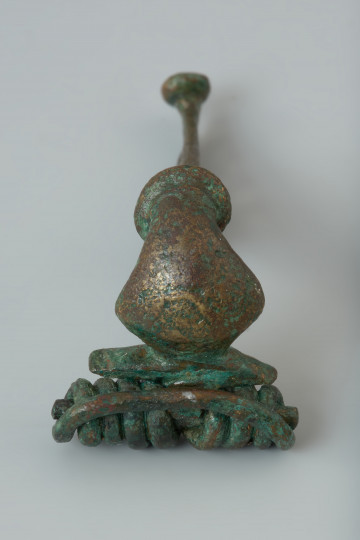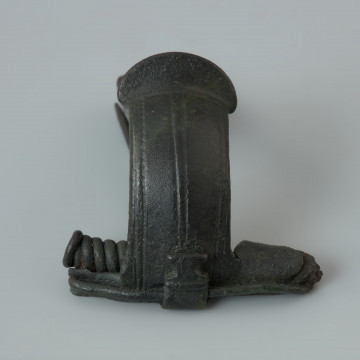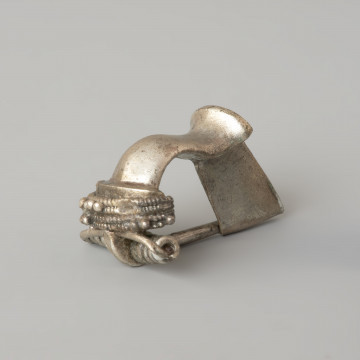
Tortoiseshell buckle
National Museum in Szczecin
Part of the collection: Antiquity
The silver fibula with the high catch-plate is beautifully decorated with beaded wire. Such rich and sophisticated decorations are typical for the Germanic people representing the Wielbark culture from the 2nd half of the 2nd century onward. During this period, refined decorative techniques such as granulation, filigree, and precious metal appliqués were intensively developed. This style is referred to in the archaeological literature as “Wielbark baroque”. The silver fibula comes from one of the most important archaeological sites of the Roman period in Pomerania (1st-4th centuries) - the cemetery in Gronów. It was found in the furnishings of an inhumation grave under a barrow, together with a bronze needle and three pottery vessels - a jug, a bowl and a goblet. In graves of the Wielbark culture, both cremation and inhumation ones, iron objects and elements of weaponry were never found. The cemetery in Gronów has been known at least since 1881. The first amateur excavations were carried out in 1881, 1887 and 1890 by pastor Plato from Złocieniec, who noticed the barrows visible in the forest. Further discoveries were made in 1926, 1939/40 and 1940-41. Between 1973 and 1977 archaeological excavations at the cemetery in Gronów were undertaken by Ryszard Wołągiewicz from the National Museum in Szczecin, who discovered 56 inhumation and cremation burials, including 49 under barrows. The latter, with their rich furnishings, including imported Roman objects, are considered to be the graves of the tribal aristocracy.
Bartłomiej Rogalski
Author / creator
Dimensions
cały obiekt: height: 1.9 cm, width: 2 cm
Object type
pin (fastener)
Technique
casting
Material
silver
Creation / finding place
Owner
Muzeum Narodowe w Szczecinie
Identification number
Location / status

National Museum in Szczecin

National Museum in Szczecin

National Museum in Szczecin
DISCOVER this TOPIC
National Museum in Szczecin
DISCOVER this PATH
Educational path